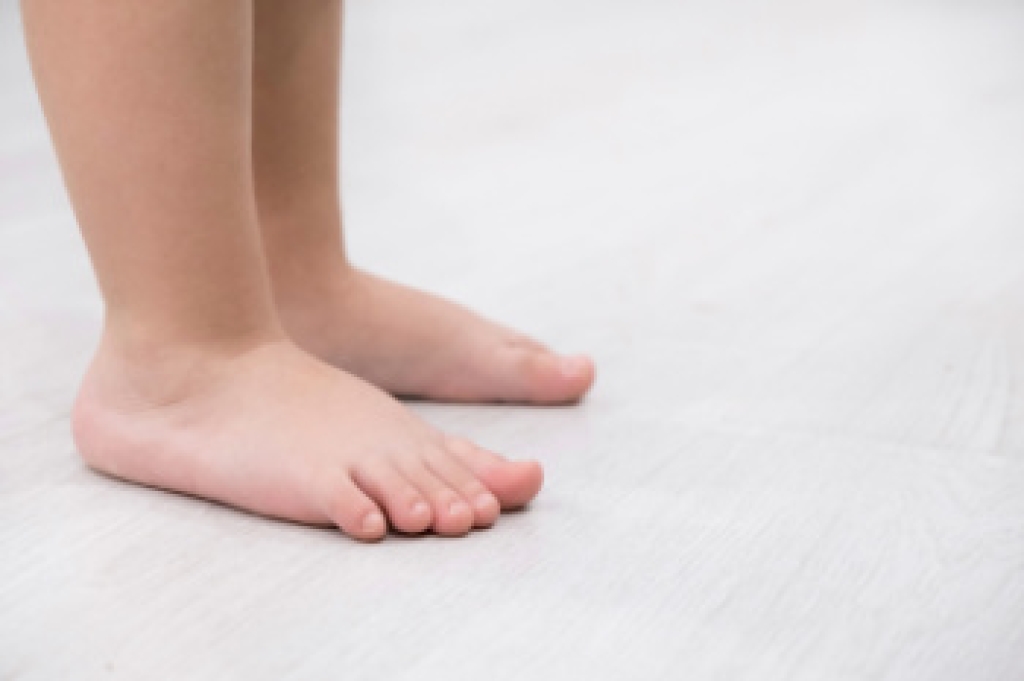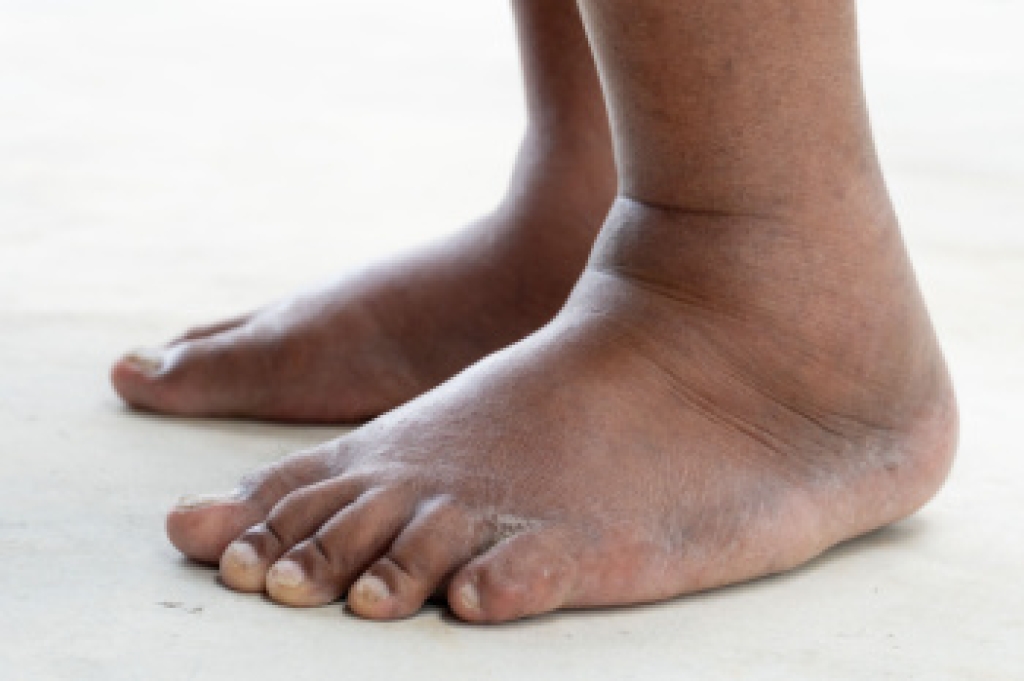
Flat feet in children occur when the arch of the foot does not fully develop, causing the entire sole of the foot to touch the ground. This condition may be flexible or rigid and can be caused by genetics, loose ligaments, or developmental issues. In flexible flat feet, the arch can be seen when the foot is elevated, and disappears when the foot is placed on the ground. Conversely, in rigid flat feet, there is no arch present at all. Children with either type of flat feet might experience foot pain, fatigue, or difficulty in walking long distances. Some kids may not show symptoms but still develop posture or balance problems over time. A podiatrist can assess the child’s foot structure and provide customized treatment, including orthotics or footwear recommendations. Early evaluation is essential to prevent long-term complications. If your child shows signs of flat feet, it is suggested that you schedule a visit with a podiatrist for an examination and any necessary treatment.
Flatfoot is a condition many people suffer from. If you have flat feet, contact one of our podiatrists from Footcare Now. Our doctors will treat your foot and ankle needs.
What Are Flat Feet?
Flatfoot is a condition in which the arch of the foot is depressed and the sole of the foot is almost completely in contact with the ground. About 20-30% of the population generally has flat feet because their arches never formed during growth.
Conditions & Problems:
Having flat feet makes it difficult to run or walk because of the stress placed on the ankles.
Alignment – The general alignment of your legs can be disrupted, because the ankles move inward which can cause major discomfort.
Knees – If you have complications with your knees, flat feet can be a contributor to arthritis in that area.
Symptoms
- Pain around the heel or arch area
- Trouble standing on the tip toe
- Swelling around the inside of the ankle
- Flat look to one or both feet
- Having your shoes feel uneven when worn
Treatment
If you are experiencing pain and stress on the foot you may weaken the posterior tibial tendon, which runs around the inside of the ankle.
If you have any questions, please feel free to contact our offices located in Elmhurst Jackson Heights, Astoria, Rego Park, and Forest Hills, NY . We offer the newest diagnostic and treatment technologies for all your foot care needs.




